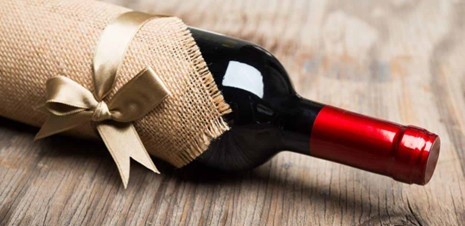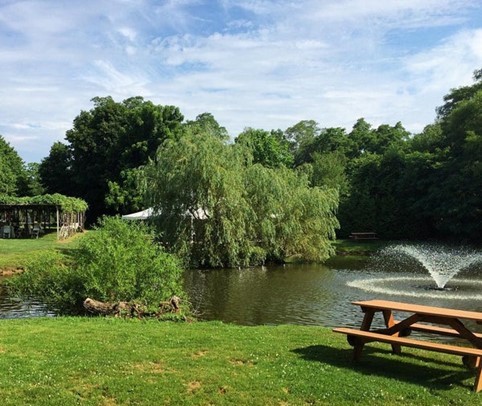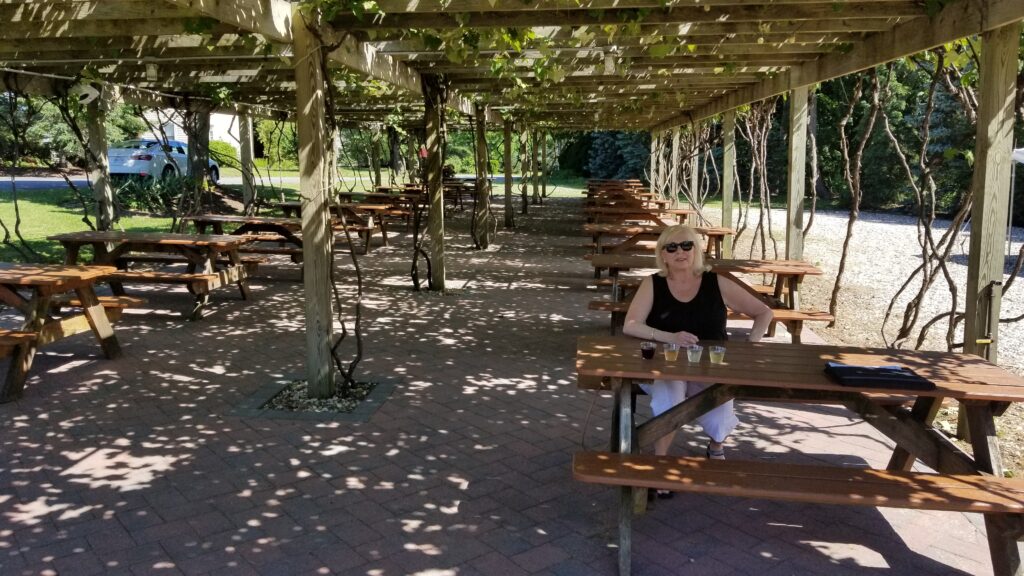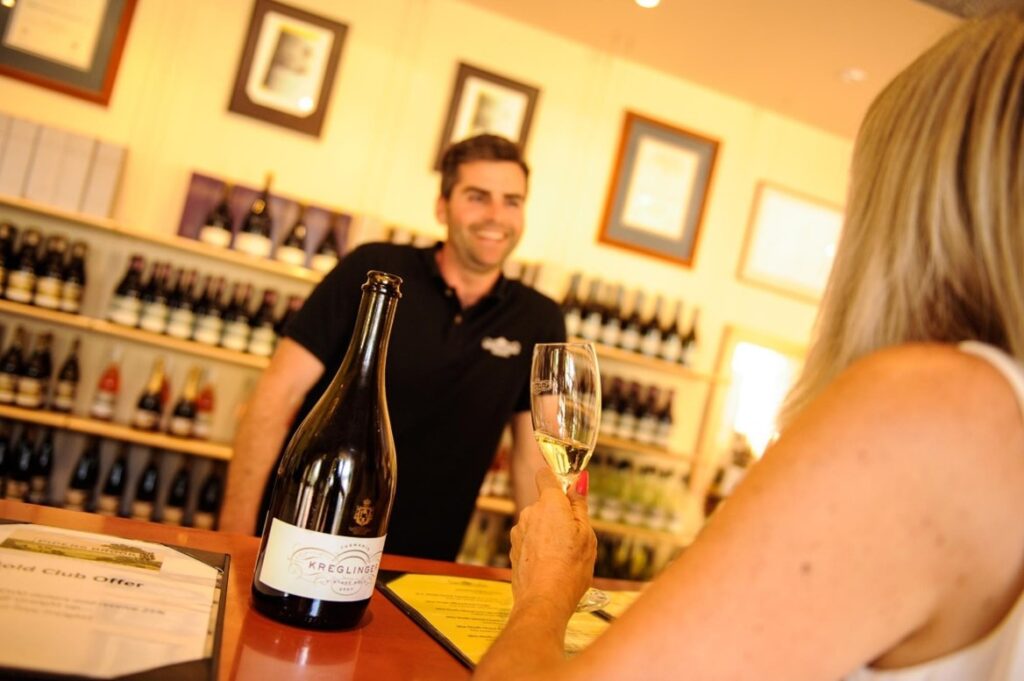We specify that this is the Gallipoli in Italy, because there is a far more famous Gallipoli in Turkey, where a notable battle was fought in World War I. This Gallipoli is a seaside village in Puglia (which some have anglicized to Apulia) near numerous vineyards where the principal grape is Negroamaro. There is a new town, which you can ignore, but the old part offers a tourist a number of reasons to stop there.
The antecedents of the town are from ancient Greece, not Rome; in fact, Gallipoli mean “beautiful city” in Greek. Over the centuries, it has been ruled by many foreigners, including the Goths, Byzantines, Normans, the dukes of Anjou, Venetians and Spaniards. Each of them has left a trace on Gallipoli.
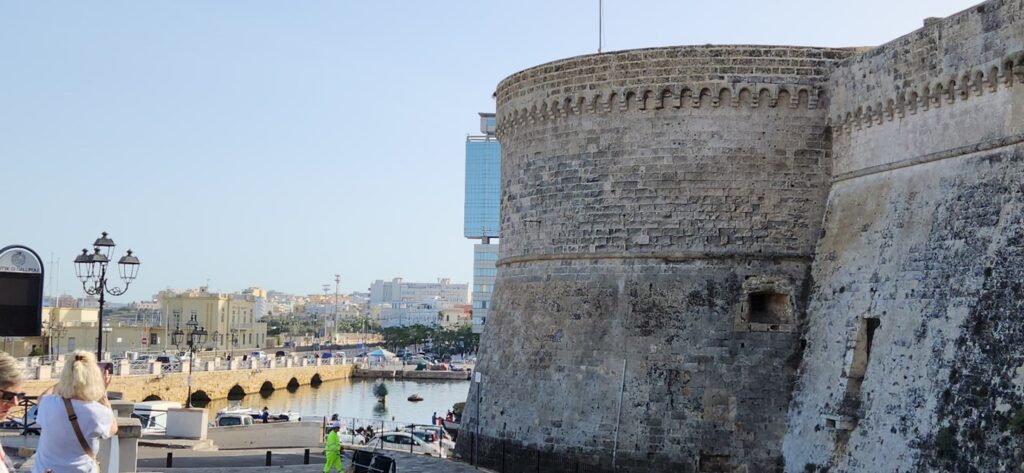
The Castle still guards Gallipoli’s harbor and the ancient bridge to the mainland.
The most impressive monument to Gallipoli’s past is the Castle. It is a huge, round fortress that overlooks the harbor. The old town is actually an isthmus, with a narrow bridge connecting it to the mainland. The castle hovers over the bridge and was intended to keep invaders, like Saracens and Tripoli pirates, at bay. We’re not sure it always worked, but conquests seem to have come from the land side, not the sea.
The Cathedral of Sant’Agata was erected in the 17th century in a plateresque style, reminding you of the Spanish overlords who were in charge at time. The exterior has statues of some martyred saints, but it is the frescoes on the interior walls and ceilings that dazzle the eye. They are so large and there are so many that it is hard to take them all in. We found it best to choose one or two and just focus on those works of art.
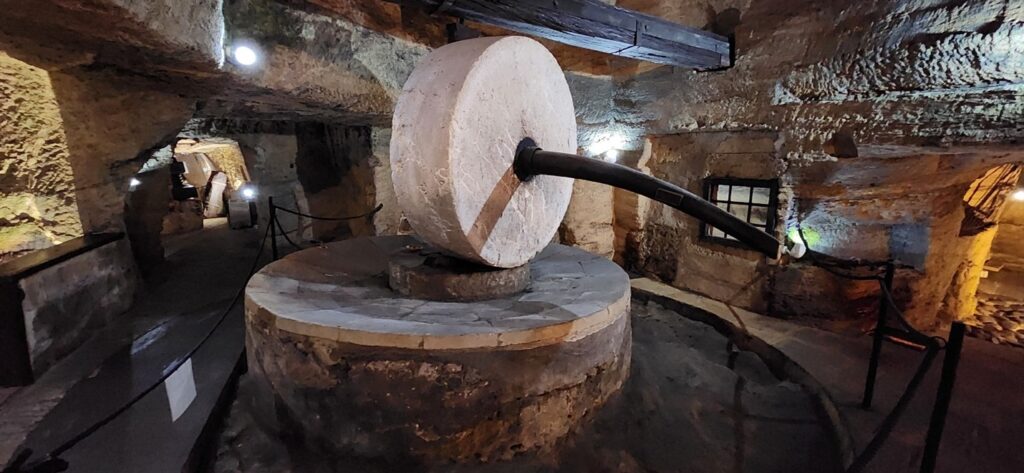
The grindstone for making olive oil.
An interesting attraction is a museum of olive oil, or more formally, the Frantoio Ipogeo di Palazzo Granafei. There were once dozens of underground olive mills in Gallipoli; this is the only one remaining. They were below the streets in order to keep the olives as cold as possible in Southern Italy’s heat. The work of pressing the olives, collecting the oil and purifying it was grueling. Local lads would work there for a year, because they were paid so handsomely for their labor that they were set up for life. The donkeys who went round and round endlessly to drive the presses were not so lucky.
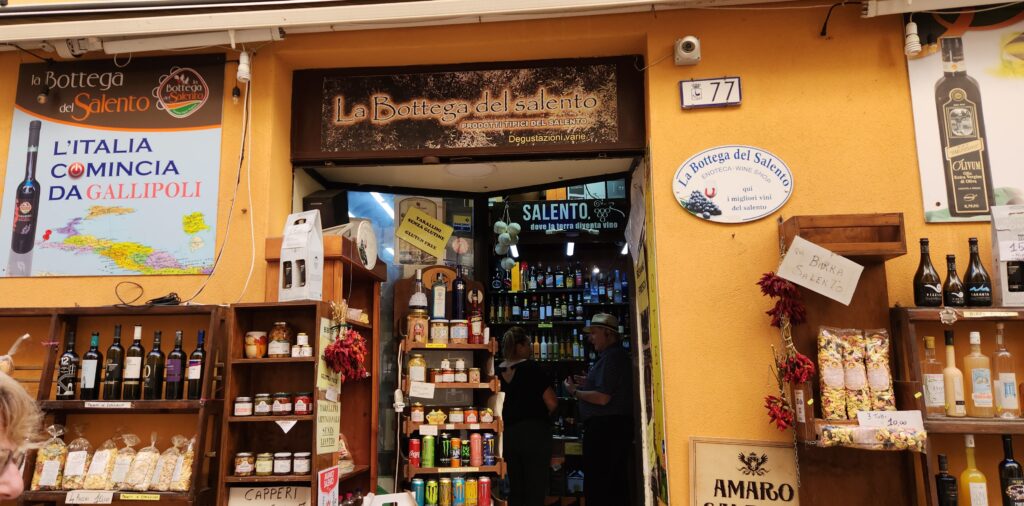
Alas, tourists have discovered Gallipoli, so as you walk along the town’s narrow streets, you’re as likely to hear English being spoken as Italian. You’ll find shops selling t-shirts and the like, but you’ll also find enough other things to keep you interested for a while. However, this shouldn’t stop you from wandering around. The well-maintained buildings are alluring and some of the shops are rather interesting.

As a parting stop in Gallipoli, we recommend the fish market, naturally down by the harbor. It smells a bit (more than a bit), but you can eat fresh seafood there and you know that it really is for the locals, not for the tourists.
